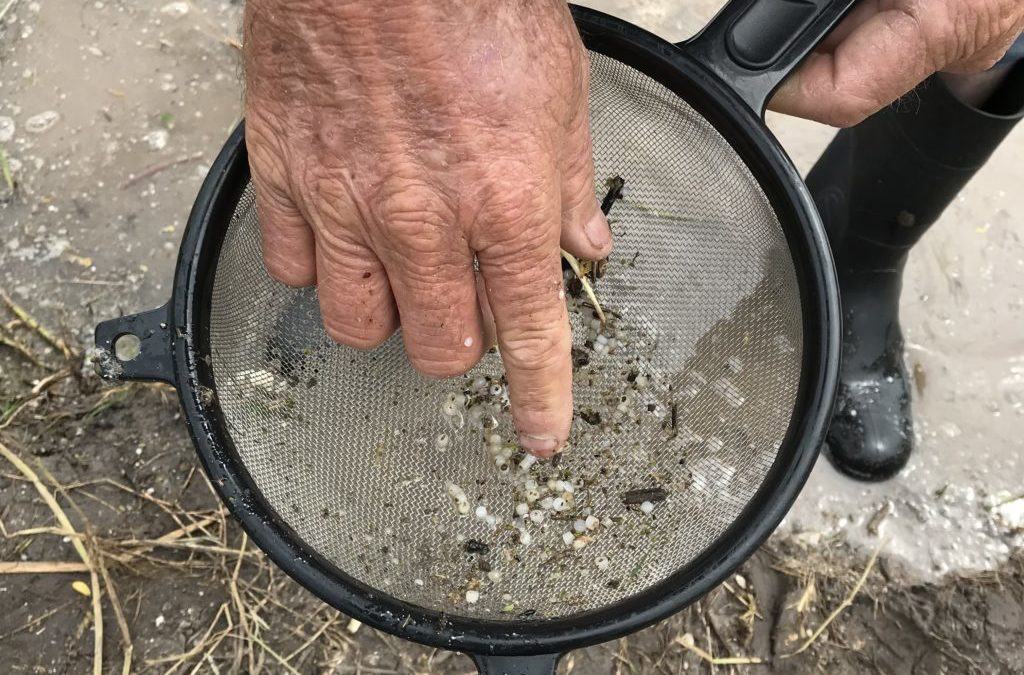SOURCE: Center for Public Integrity
DATE: June 13, 2019
SNIP: Jace Tunnell shuffled forward near the water’s edge, head bent. He was hunting for something that shouldn’t be on this beach near Corpus Christi, and he kept finding it. Hidden in the sand — white, tan, nearly translucent — were tiny plastic pellets. They’re about the size of a lentil, most of them, so insubstantial that several blew out of his hand as soon as he picked them up. Some were tan from baking in the sun. It wasn’t hard to see why a bird looking for seeds would snap these imposters up.
These are the products of plastics producers, intended to be turned into bottles, bags and countless other items. As much as anything one-tenth of an inch across could sum up the modern world, they do. A marvel of chemical engineering. A convenient material that will long outlast us. A global waste predicament of daunting scope.
Microscopic plastic particles are in our oceans, the fish we eat, the air we breathe, the water we drink.
Plastic waste is piling up, increasing amounts of it going to landfills as U.S. recycling programs — dependent on Asian countries that no longer want our scrap — struggle to adjust. In March the United Nations, “alarmed” by the environmental and public health consequences of plastic items intended to be used once and thrown away, urged countries to “take comprehensive action.”
Against this backdrop, the United States is about to make a whole lot more of the stuff.
Production of the most common plastic, polyethylene, is on track to jump more than 40 percent by 2028 in the U.S., according to research firm S&P Global Platts. That’s 8 million metric tons per year more than in 2018 — roughly the amount, coincidentally, that scientists estimate is annually flowing into the oceans now.
In the last two years alone, companies such as ExxonMobil and Dow have built or started construction on at least 17 new U.S. polyethylene plants and lines, according to a Center for Public Integrity review of corporate plans. It’s a surge largely centered along the coasts of Texas and Louisiana.
More plants are likely on the way as firms capitalize on the country’s deluge of cheap natural gas, a key feedstock for plastic. That’s a major ripple effect of the U.S. fossil fuel boom, which has also led to soaring exports of crude oil and liquefied natural gas at a perilous moment in the global fight to contain a climate crisis.
The International Energy Agency warned last fall that the world is on pace to double the amount of this waste in the oceans by 2030 and more than quadruple it by 2050.
Much of the plastic fouling the oceans comes from packaging or other items that weren’t recycled, landfilled or burned after people used them. But pellets — the plastic that never got turned into products — are an enduring part of the equation.
A 1972 study published in the journal Science said they were “abundant in the coastal waters of southern New England.” In 1990, the EPA told Congress “the high concentrations of the pellets found in the world’s oceans are a major concern.” Two years later, the agency said it found pellets in harbors across the country, including more than 700,000 in the Houston Ship Channel. More recent efforts to quantify the problem suggest it persists worldwide: Eunomia Research & Consulting, a U.K. firm focused on waste in marine environments, estimated in 2016 that 230,000 metric tons of plastic pellets slip into the oceans every year. (That’s so many of them, it’s in the trillions.)
Just one plastic manufacturing plant makes a trillion plastic pellets every day.
A new study by two researchers from the University of California, Santa Barbara, said greenhouse gas emissions over the plastic life cycle are on track to nearly quadruple in 2050 compared to 2015. Already that equates to the climate impact of 189 coal power plants, according to estimates from a separate report by advocacy organizations such as the Center for International Environmental Law, the Environmental Integrity Project and FracTracker Alliance.

